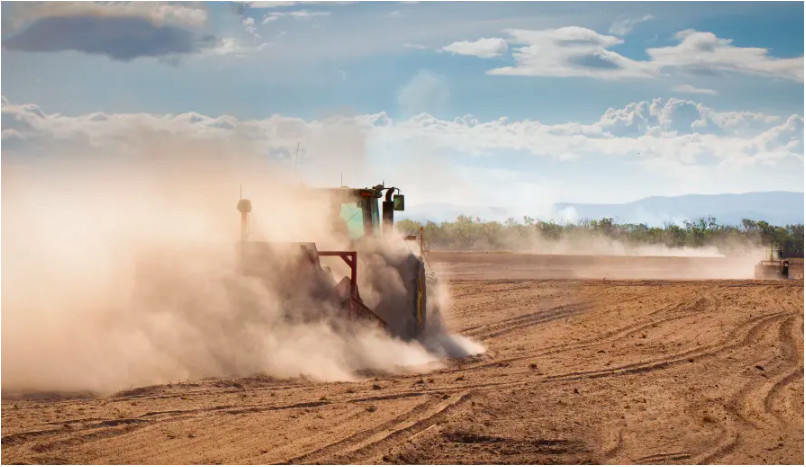
Sciences & Technology
Global warming could accelerate towards 1.5℃ if the Pacific Ocean gets cranky

The speed of global warming has never been as fast as it is today, and is affecting the whole planet at the same time, for the first time in at least two millennia
Published 25 July 2019
New reconstructions of Earth’s temperature over the past 2000 years highlight the astonishing rate of recent widespread warming of our planet.
They also give us a clearer picture of decade-to-decade temperature variations and what drove those fluctuations before the industrial revolution.
The research, published in Nature Geoscience, produces the clearest picture yet of the Earth’s average temperature over the most recent two millennia and reinforces concerns about the future impacts of global warming.

The study includes an update of the original ‘hockey stick’ curve, published by Mann, Bradley & Hughes twenty years ago. It was the first to note that late 20th century warmth in the Northern Hemisphere was unprecedented during at least the last 1000 years.
Since then, scientists from the palaeoclimate community have been working to construct an improved and expanded data set, and enhance the statistical methods underlying their reconstructions of global climate.

Sciences & Technology
Global warming could accelerate towards 1.5℃ if the Pacific Ocean gets cranky
In past millennia, we didn’t have the luxury of modern technology such as ocean buoys and satellites to gauge temperature, but nature recorded the answers for us.
We just have to learn how to read those clues.
Corals, ice cores, tree rings, lake sediments and ocean sediment cores are examples of proxy data sources that provide scientists with a wealth of information about past conditions. This proxy data can be brought together to tell us a lot about the global climate system in the past.
Teams of scientists around the world have spent many thousands of hours of field and laboratory work collecting samples and analysing data. They publish and make freely available their precious data so that other teams of scientists can undertake further analysis.
Previously, our team and other experts around the world, meticulously analysed, vetted and collated temperature-sensitive proxy data from around the world. We then made the full dataset publicly available.

With this unique dataset in hand, our team set about reconstructing past global temperatures.
Scientists are notoriously sceptical of their own analysis, but we are more confident about our findings when different methods applied to the same data yield the same result.
In this latest paper, we applied seven different methods to a common underlying dataset. We found a remarkable resemblance in the multi-decadal fluctuations in temperature between the seven methods.

We also found that climate models performed very well in comparison to our reconstructions, capturing the amplitude of natural variability in the climate system.
This gave us the confidence to delve further, to try to understand what drove global temperature fluctuations before the industrial revolution took hold.
To do this we used climate models and reconstructions of external climate forcing – a term which refers to influences from outside of the climate system such as volcanic eruptions and solar variability.
We determined that prior to the industrial revolution, global temperature fluctuations from decade to decade were mainly controlled by aerosol forcing from major volcanic eruptions - not by variations in the Sun’s output.
So, in the centuries before human activity began to affect the climate – volcanoes controlled global temperature.
There are, of course, natural changes in Earth’s temperature from decade to decade and century to century. With our new reconstructions, we were able to quantify the rate of warming and cooling periods across the past 2000 years.
We found that at no time in that period has the rate of Earth’s warming been so high.

In statistical terms, all instrumental 51-year temperature trends starting after the 1950s exceed the 99th percentile of reconstructed pre-industrial 51-year trends.
For increasing timescales, particularly those longer than 50 years, the probability that the largest warming trend occurred after 1850 swiftly approaches 100 per cent.
What does this mean in a nutshell?
It is yet further evidence of human-induced warming of the planet and illustrates that Earth is getting warmer, faster.

Sciences & Technology
The costs and benefits of a clean economy
Our understanding of Earth’s past temperature variations contributes to our understanding how life evolved, where our species came from, how our planet works and how modern climate change will unfold due to human activity.
We know that over millions of years, the movement of tectonic plates and slow interactions between the solid earth, the atmosphere and the ocean affect global temperature.
Over tens to hundreds of thousands of years, our planet’s mean temperature is gradually influenced by small variations in the geometry of the Earth and the Sun, like wobbles and variations in the Earth’s rotation and tilt.
At the Last Glacial Maximum about 26,000 years ago, huge ice sheets covered large parts of the Northern Hemisphere landmass.
The Earth then transitioned into a 12,000-year warm period called the Holocene.

This was a time of relative stability in global temperature, apart from the temporary cooling effect of the odd volcano.
With the development of human agriculture, our prosperity and population grew. Following the industrial revolution, rapid warming commenced due to human activity.
Now, with a clear and concerning picture of temperature variations of the past few millennia we have a greater understanding of the nature of Earth’s recent warming. Is this what we really want for the future of our planet?
Researchers in this study include Neukom, R., Barboza, L.A., Erb, M.P., Shi, F., Emile-Geay, J., Evans, M.N., Franke, J., Kaufman, D.S., Lücke, L., Rehfeld, K., Schurer, A., Zhu, F., Brönnimann, S., Hakim, G.J., Henley, B.J., Ljungqvist, F.C. & Von Gunten, L.
We owe the teams of proxy experts much gratitude. It is their generous contribution to science and human knowledge that has supported this and other compilation and synthesis studies.
A version of this article also appeared in The Conversation.
Banner: Getty Images